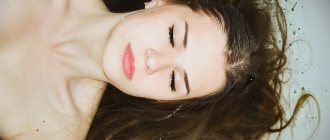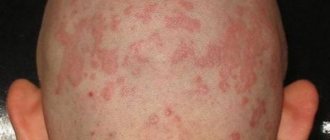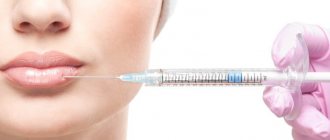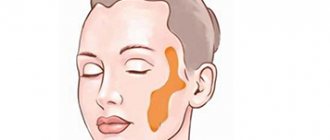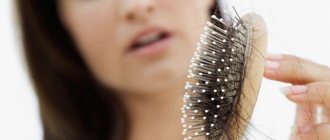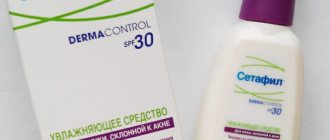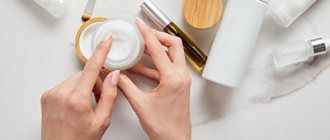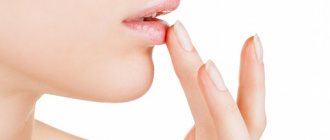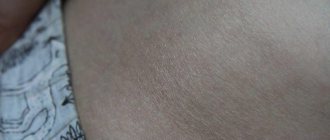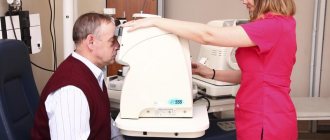Most women consider their hair not just as a part of their body, but also as a natural decoration, and therefore actively use all the possibilities of modern cosmetology in order to create hairstyle masterpieces from their hair. From the outside it looks very attractive at a holiday or party, but for the hair itself, this kind of experiment can be harmful. And often, with excessive enthusiasm for various types of styling, coloring and curling, a problem such as thinning hair in women appears.
Of course, answering the question of why women’s hair thins would definitely be wrong. And blame the cosmetic industry for everything too. And all because in fact, there are many more factors that can affect the health of hair than were announced.
What to do if women's hair is thinning? First of all, you need to understand that the presence of thinning hair in women is not a death sentence and this condition will not necessarily lead to alopecia. At the same time, it is an eloquent warning signal that something is wrong, and you definitely need to pay attention to it. The best thing you can do if you notice that your hair is not as thick as it used to be is to visit a trichologist who specializes in hair health and will probably give you objective medical advice on how to treat hair. how exactly can you deal with the problem.
Classic alopecia. Androgenetic (male) and diffuse (female) alopecia
These are the two most common situations in medical practice. The cause of androgenetic alopecia (AGA) is most often genetics, followed by provoking factors: stress, lack of microelements, vitamins, trichotoxic drugs, etc. Therefore, more often we call AGA not a disease, but a pathological condition.
What is characteristic of the female type of hair loss is that, in addition to genetics, hormonal problems (usually sex hormones) are in second place, and in this case, alopecia can often occur after various diseases.
Now let's look at the effect of provoking factors in more detail.
Possible reasons why women's hair is thinning
When a woman discovers that her hair has become thinner, the first thing that comes to mind is a health disorder. But in reality, everything is far from so simple. The loss of a certain part of hair is not always associated with pathological processes. To give you a better idea of what exactly can affect hair thickness, we will look at the most common causes of hair loss.
1) Hair is too heavy. It's no secret that many women love to grow their hair long. And this can cause them to fall out. Especially for those ladies whose hair is naturally thick and heavy. At a certain point, the hair may simply be too heavy for its “bulb” and fall out. Therefore, do not forget to regulate the length of your hair.
2) Improper care. Frequent coloring, the use of hair dryers, curling irons, straightening irons, hot rollers, tight elastic bands and styling products are quite capable (especially if these techniques are used by a woman in combination) to provoke hair loss. It is also important to choose the right hair care products (shampoos, conditioners, masks).
3) Overwork, stress, unhealthy diets. All these external factors can deprive hair of normal nutrition. In addition, the immune system's response to a stressful situation is unpredictable. Sometimes there is a malfunction in it, and the body begins to reject the cells of the hair follicles as foreign.
4) Hormonal disorders. In this case, testosterone is produced in excess in the female body, and thinning hair in women and men is a phenomenon caused by an identical reason.
5) Taking medications (especially if the course is long). During long-term treatment of a number of diseases, the aggressive effects of medications can provoke hair loss. A classic example is radiation and chemotherapy in the treatment of cancer. But, you see, when it comes to life and health, issues of preserving hair recede into the background. However, even antibiotic therapy can be a factor that triggers hair thinning. Therefore, if you notice negative changes, be sure to report them to your doctor. It may be necessary to correct the course of treatment, but, again, this can only be done by a certified doctor.
Hormonal factors
A problem with any endocrine gland can lead to pathological hair loss. Most often this is the thyroid gland (hypo- or hyperfunction, which is very typical for our country, since we are in an endemic zone where there is a lack of iodine), ovaries (the most common cause is polycystic ovary syndrome, disturbances in the production of estradiol, dihydrotestosterone), as well as the adrenal glands (produce cortisol) and the pituitary gland (prolactin). Hair loss often occurs with diabetes, mainly type 1.
In any of these situations, the normal balance of hormones is disrupted, which leads to increased hair loss, impaired restoration, or deterioration of the structure of the hair shaft. In such cases, it is necessary to carry out complex therapy, treatment simultaneously with a trichologist and an endocrinologist, since only normalization of hormonal levels can stop hair loss, but not improve hair growth and structure. This is one of the main mistakes of patients who think that normalizing hormone levels is enough.
Pearl disease: why hair breaks
So, after washing, the hair scales actively open up. Therefore, in order for modern shampoos to leave hair in normal condition, silicones are always added. What do these silicones do? They form a film on the hair. It seems that at the end we get hair in normal condition, at least visually. From above, these opened scales are covered with a film, but they are no longer stuck together. As a result, gas exchange with air is disrupted and as soon as this silicone film is erased, our scales, which are not held together by anything, begin to fall off in fragments.
This is how we get “pearl disease” - when the hair has small balls in the middle, along which the hair breaks off. What it is? The scales “fell off”, leaving this root part, which easily swells with water, but does not carry any beneficial properties. Hair breaks off easily in this area.
During the entire period of hair growth, frequent washing with sulfate shampoos is sufficient to ensure that the ends of long hair are severely damaged. Even if you don't dye your hair, even if you don't chemically treat it.
Toxic factors
These include the effects of anesthesia during surgical interventions, taking a number of trichotoxic drugs (retinoid group, antibiotics, etc.). A separate risk group is cancer patients undergoing radiation or chemotherapy treatment. It should be noted that in these situations, in most cases, the hair recovers on its own after the cessation of exposure. The criteria for this are the duration of hair loss of no more than 2-3 weeks, slight loss of volume, rapid recovery, hair growth. If this does not happen, then it is better to contact a trichologist.
Why is hair thinning?
Any contact with the scalp of silicones and other film formers should be avoided. This is how the effects of silicones occur.
Hair grows from follicles, cylindrical depressions in the skin. Each follicle has a nerve or blood vessel. Each follicle contains a hair papilla - this is the place where young hair cells multiply, where the stem cells are located, from which hair is then formed. A sebaceous gland passes through each follicle. Everything that the follicle blocks, disrupting normal gas exchange, also disrupts the vital activity of the follicles.
As soon as you apply a balm that contains silicones or polyquaternium to your scalp, as soon as you regularly use shampoo with silicones, problems begin. Silicones on the scalp form a film that clogs the mouth of the hair follicles, disrupting the normal outflow of sebum. As a result, we get changes in the composition of sebum, which lead to negative consequences.
But the consequences do not come immediately. You will see them in 4-5 months.
The diameter of the hair, the thickness for which we are fighting, completely depends and corresponds to the internal diameter of the follicle. When the mouth of the follicle is clogged with silicone film, it changes its viscosity, oxidizes and narrows the diameter of the internal follicle.
The hair becomes thinner - this process is not fast, but within a few months it reaches sufficient capacity for the hair to become thinner, and most of the follicles enter the sleep phase. The result is thinning, thin and brittle hair.
So, at all costs you should avoid contact with the scalp with those care products that contain silicones, polyquaternium or other film-forming substances. Therefore, it is highly advisable to move away from standard shampoos to sulfate-free ones.
Atypical types of hair loss
The so-called idiopathic alopecia (that is, with an unknown cause) includes focal forms. They are characterized by the formation of areas devoid of hair. There are single, multiple, subtotal, total and universal forms of alopecia. In a one-time, first case, the hairline often recovers on its own without treatment within a year (with the exception of the universal form).
The cicatricial form (Broca's pseudopelade) is also known. In this case, a transplant is indicated; the treatment is ineffective, since the root is replaced by connective tissue, that is, in fact, there is nothing to treat.
How to restore damaged hair?
The first task is to gently wash your hair. We must wash in such a way as not to damage these scales and not wash away the squalenes or replace them in any way.
What to do? This, of course, is to somehow avoid such shampoos that contain SLS, SLES, ALS. Fortunately, girls are now starting to look for sulfate-free shampoos, but you need to read the ingredients very carefully. Because many people advertise, but when you come and read the ingredients, it turns out to be completely different.
There are safe generations of surfactants called isethionates
(Isethionate) and
glucosides
(Glucoside), they work most gently on the hair.
Examples of such surfactants: Sodium Cocoyl Isethionate, Lauryl Glucoside, Decyl Glucoside
.
But there is one problem - such surfactants are more expensive, and they are almost 6 times more expensive. And Cocoyl Isethionate is generally 10 times more expensive than SLS. This already brings the shampoo into a different price category. About 60% of the cost of high-quality shampoo is made up of surfactants. Naturally, the cost of the shampoo will directly depend on the quality of the surfactants used by the manufacturer.
However, it is worth adding that mass-market brands spend a fairly high percentage on advertising, unlike natural cosmetics.
Shampoos with sulfates add polyquaterniums or silicones, which will create shine and smoothness, although the hair will be severely damaged in the process, because such masking substances do not work well on the scalp.
So, shampoos with safe surfactants will have a much milder effect, and moreover, they will not require the addition of masking agents.
Post-COVID hair loss
Recently, the number of patients complaining of very severe hair loss has increased. Very characteristic signs are a flurry of sudden hair loss, which occurs all at once, in one day, and rapid (2-4 weeks) loss of volume 2-3 months after suffering from COVID. Initially, doctors believed that this was a reaction to aggressive therapy, but then patients began to come in who suffered from the disease in a mild form or were completely on their feet. Conclusion: the virus itself has a trichotoxic effect. Treatment with a trichologist is required if hair loss lasts more than 1–2 weeks. The prognosis is usually positive.
How do sulfates affect hair?
What will a standard shampoo from the mass market look like? In 99% of the composition you will find Sodium Lauryl Sulfate, Sodium Laureth Sulfate or Ammonium Lauryl Sulfate
, as well as various additives that help hide the irritating effect of surfactants.
What is the structure of hair? This is the core, which is covered with scales. And these scales are held together with cement - squalene and squalane. Any strong surfactants that are used in conventional shampoos dissolve them very easily and effectively, washing away the natural cement.
Conclusion
Thinning hair is a common problem affecting the majority of the population. It can be quite stressful. However, it is important to understand that more often than not, one of the above treatments can help reverse it.
Hair loss of approximately 100 strands per day is natural and normal. A person may notice a change in hair loss when undergoing certain treatments, changing shampoo, or stress. If you are experiencing more hair loss than usual, it is important to recognize the signs and seek professional advice rather than self-diagnosis.
About Jurassic Spa shampoos
Jurassic Spa shampoos contain only natural cleansing agents in their detergent base. Therefore, shampoos are opaque and foam differently than usual. But they allow you to gently cleanse your hair.
And these shampoos also contain a lot of “goodies” for the scalp.
- First of all, these are plant extracts and prebiotics. Prebiotics help maintain healthy scalp flora.
- There is a little secret - we use sensolene, which is a plant analogue of silicone. This is a fraction of olive oil that does not accumulate on the hair, but allows you to get closer to the effect of silicones, adding shine. This conditioning substance is completely natural.
Thinning hair treatment
- Minoxidil: This is a medicine that is reported to help stimulate hair growth. It is recommended to use this medication under the advice of a dermatologist. Always test the patch before first use.
- Anti-androgens: This is specifically for women. Androgens are male sex hormones that are administered to women to stimulate hair growth. It should be strictly taken only under the supervision of a doctor.
- Iron supplements: People with iron deficiency often find that their hair growth is also affected. Therefore, eating iron-rich foods or taking iron supplements can help with thinning hair.
- Hair transplant: In this treatment, a narrow strip of scalp is removed over several sessions. This strip is divided into tiny grafts, which are then planted where thinning hair is noticed. This procedure is done to ensure that the results are much more realistic.
Apart from medical help, there are several popular home remedies (backed by research) that are known to help with hair growth, which are discussed in the next section.

